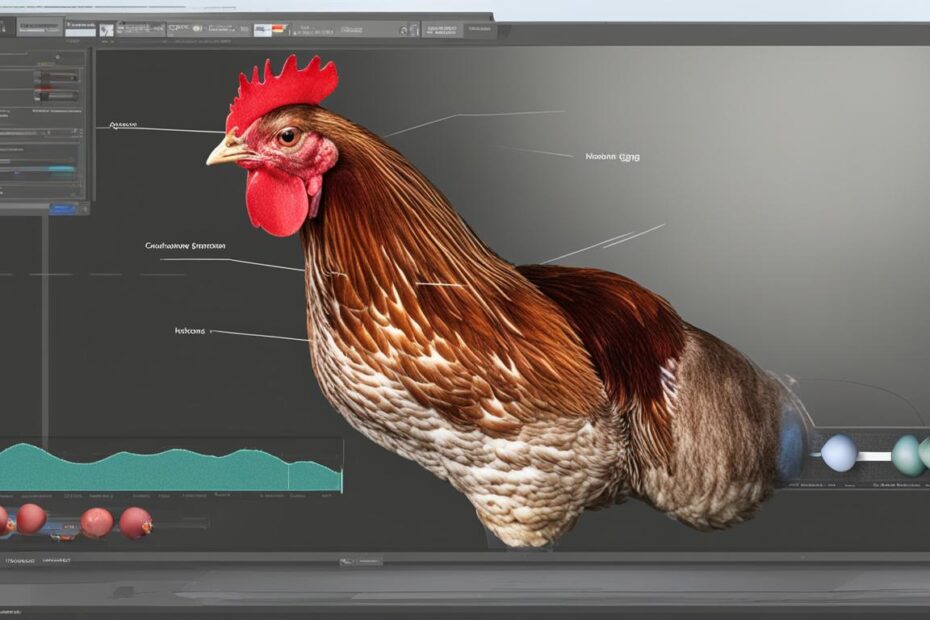Have you ever wondered how chickens reproduce? Are they capable of asexual reproduction, or is it strictly a sexual process? In this article, we will explore the fascinating world of chicken reproduction and uncover the secrets behind their reproductive processes.
Key Takeaways:
- Female chickens have the ability to reproduce both sexually and asexually.
- In asexual reproduction, female chickens can lay eggs without mating, but sexual reproduction through fertilization is preferred.
- The reproductive process in chickens involves complex behaviors, interactions, and physiological mechanisms.
- Understanding chicken reproduction provides insights into the diversity of reproductive strategies in the animal kingdom.
- The origins of life and the evolution of reproductive strategies are interconnected.
The Fascinating Mating Behavior of Chickens
Chickens, like many other animals, have a unique and fascinating mating behavior. Understanding their mating behavior provides insight into their breeding habits and reproductive strategies.
In a typical mating behavior, the rooster takes the lead by initiating courtship. He performs a dance and makes vocalizations to attract the attention of the hen. The hen, if interested, responds by crouching down and wagging her tail as a sign of acceptance.
Once the hen signals her willingness to mate, the rooster mounts her and transfers sperm to fertilize the eggs internally. Chickens engage in multiple matings over a period of time to increase the chances of successful fertilization.
This image showcases the mesmerizing dance of courtship that the rooster performs to attract the hen. It highlights the unique behavior displayed by chickens during their mating process.
Table: Comparison of Chicken Mating Behavior and Breeding Habits
| Mating Behavior | Breeding Habits |
|---|---|
| Rooster initiates courtship | Multiple matings for increased fertilization |
| Hen responds with tail wagging | Female lays eggs after successful fertilization |
| Rooster mounts the hen to transfer sperm | Optimal reproduction through sexual fertilization |
The table above summarizes the key aspects of chicken mating behavior and breeding habits. It highlights the role of courtship, multiple matings, and the need for successful fertilization in the reproductive process of chickens. Understanding these fascinating aspects of chicken reproduction contributes to our knowledge of the complex and diverse ways in which animals reproduce.
Understanding the Chicken Reproductive System
The chicken reproductive system is a complex network of organs and processes that enable the successful reproduction of these avian creatures. Both male and female chickens play crucial roles in this system, each contributing to the creation of new life.
In males, the reproductive system includes the testes, which produce sperm. During mating, the male transfers sperm into the female’s reproductive tract, where it fertilizes the eggs. The female, on the other hand, possesses the ovaries, which produce eggs. These eggs are then fertilized by the sperm and begin the development process.
The fertilized eggs move through the oviduct, a tube-like structure in the female reproductive system. Inside the oviduct, the embryos develop before eventually being laid as eggs. This intricate process ensures the survival and continuation of the chicken species.
| Male Reproductive System | Female Reproductive System |
|---|---|
| Testes: Produce sperm | Ovaries: Produce eggs |
| Transfer of sperm during mating | Eggs are fertilized by sperm |
| – | Eggs pass through the oviduct for development |
The chicken’s reproductive system is a remarkable example of avian sexual reproduction. It showcases the intricate interactions between male and female reproductive organs, as well as the journey of fertilized eggs through the oviduct. Understanding the details of this system allows us to appreciate the complex processes that drive life’s continuation in chickens.
The Intricate Process of Chicken Fertilization
Chicken fertilization is a complex and fascinating process that involves multiple stages. It all begins with the mating behavior of chickens, where the rooster transfers sperm into the hen’s reproductive tract. The sperm then travels up the oviduct to reach the newly developed egg. Inside the oviduct, the sperm fertilizes the egg, initiating the formation of an embryo. This intricate process occurs within a specific window after mating, known as the fertile period. Once fertilized, the egg undergoes further development before being laid by the hen.
The poultry reproductive cycle relies on the successful fertilization of eggs to ensure the continuation of the chicken population. During mating, the rooster’s sperm is transferred to the hen’s oviduct, where it encounters the developing egg. The fertilization process is facilitated by the interaction between the sperm and the egg, which leads to the fusion of genetic material and the formation of an embryo. This process is essential for the development of a viable chick within the egg.
To visually illustrate the complex process of chicken fertilization, the following table provides a summary of the key stages and events:
| Stage | Description |
|---|---|
| Mating | The rooster transfers sperm to the hen’s reproductive tract. |
| Fertilization | The sperm travels up the oviduct and fertilizes the developing egg. |
| Embryo Formation | The fertilized egg develops into an embryo within the oviduct. |
| Egg Laying | The hen lays the fertilized egg, which continues to develop outside the body. |
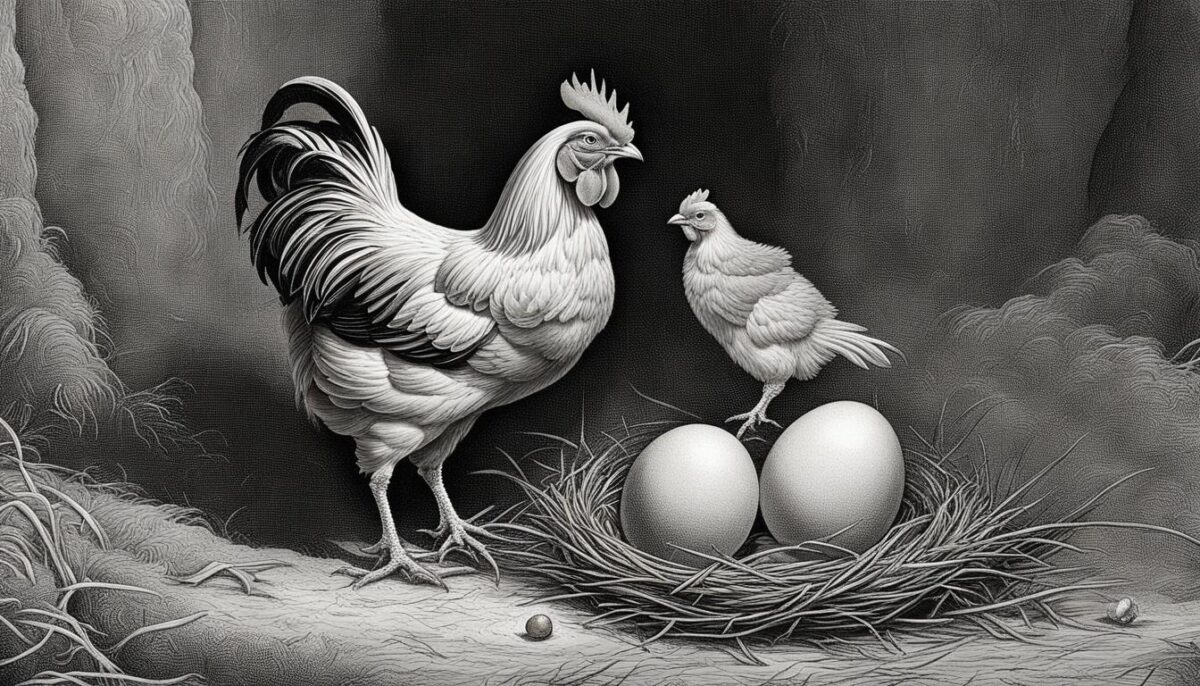
“The process of chicken fertilization involves a series of intricate steps, each playing a crucial role in the formation of a viable chick. From the initial transfer of sperm during mating to the fusion of genetic material and the development of an embryo, this process showcases the complexity and wonders of nature.”
Understanding the intricate process of chicken fertilization provides valuable insights into the reproductive strategies of animals and the continuity of life. It highlights the importance of successful fertilization in ensuring the survival and growth of the chicken population. With further research and exploration, we continue to unravel the secrets of chicken reproduction and gain a deeper understanding of the fascinating world of nature.
Unique Cases of Asexual Reproduction in the Animal Kingdom
Asexual reproduction, although less common than sexual reproduction, can be observed in certain animal species. Stick insects, for example, have been known to reproduce asexually through a process called parthenogenetics. This means they can produce offspring without the need for males. However, in some cases, as with the stick insect species Acanthoxyla inermis, the introduction of a male individual can trigger a transition back to sexual reproduction. These unique cases of asexual reproduction provide valuable insights into the evolutionary strategies of different animal species.
While sexual reproduction allows for genetic diversity and variation, asexual reproduction offers certain advantages in specific situations. It allows for rapid reproduction and colonization in favorable environments. Asexual reproduction is often observed in species that face low population density or limited opportunities for mating. By reproducing asexually, these organisms can increase their population size without the need to search for mates.
In addition to stick insects, other examples of animals reproducing asexually include certain species of lizards, fishes, and insects. For instance, the Amazon molly fish is an all-female species that reproduces exclusively through asexual reproduction. These animals have found unique ways to overcome the challenges of reproducing without the involvement of males and have adapted to their specific ecological niches.
The Transition from Sexual to Asexual Reproduction
While asexual reproduction offers advantages in certain circumstances, it is important to note that sexual reproduction is still the dominant mode of reproduction in the animal kingdom. The ability to reproduce sexually provides organisms with genetic diversity, which is crucial for adapting to changing environments and evolving in response to selective pressures. However, the existence of asexual reproduction in some species highlights the complexity and diversity of reproductive strategies in the animal world.
Table: Examples of Animals Reproducing Asexually
| Animal Species | Method of Asexual Reproduction |
|---|---|
| Stick Insects | Parthenogenesis |
| Amazon Molly Fish | Gynogenesis |
| Whiptail Lizards | Parthenogenesis |
| Aphids | Parthenogenesis |
These examples showcase the diversity of reproductive strategies and the fascinating adaptations that organisms have developed to ensure their survival and reproductive success.
Challenging the Origin Story: The Chicken and Egg Dilemma
The origin of life on Earth is still a subject of scientific inquiry, and the chicken and egg dilemma is a classic example. One theory suggests that the first genomes were made of RNA instead of DNA. “RNA world” hypothesis proposes an “RNA world” preceding the current DNA-based system. Another emerging idea suggests that chemical reactions supporting life, known as metabolism, may have preceded self-replicating molecules. This “metabolism first” concept could have originated at deep-sea hydrothermal vents.
These alternative hypotheses challenge traditional views on the origin of life and its complex building blocks. The debate between DNA and RNA in early life raises questions about the role of each molecule and their interplay in the emergence of living organisms. While DNA is crucial for storing and transmitting genetic information, RNA may have played a more active role in performing essential functions without the need for proteins.
These alternative hypotheses challenge traditional views on the origin of life and its complex building blocks.
Intriguingly, the “metabolism first” hypothesis suggests that early life may have started with chemical reactions before the emergence of self-replicating molecules. This concept supports the idea that complex biological systems may have gradually evolved from simpler chemical processes. Deep-sea hydrothermal vents, with their unique geochemical conditions, provide a compelling setting for the origin of life. These underwater volcanic systems are rich in minerals and energy sources that could have fueled the chemical reactions necessary for life to emerge.
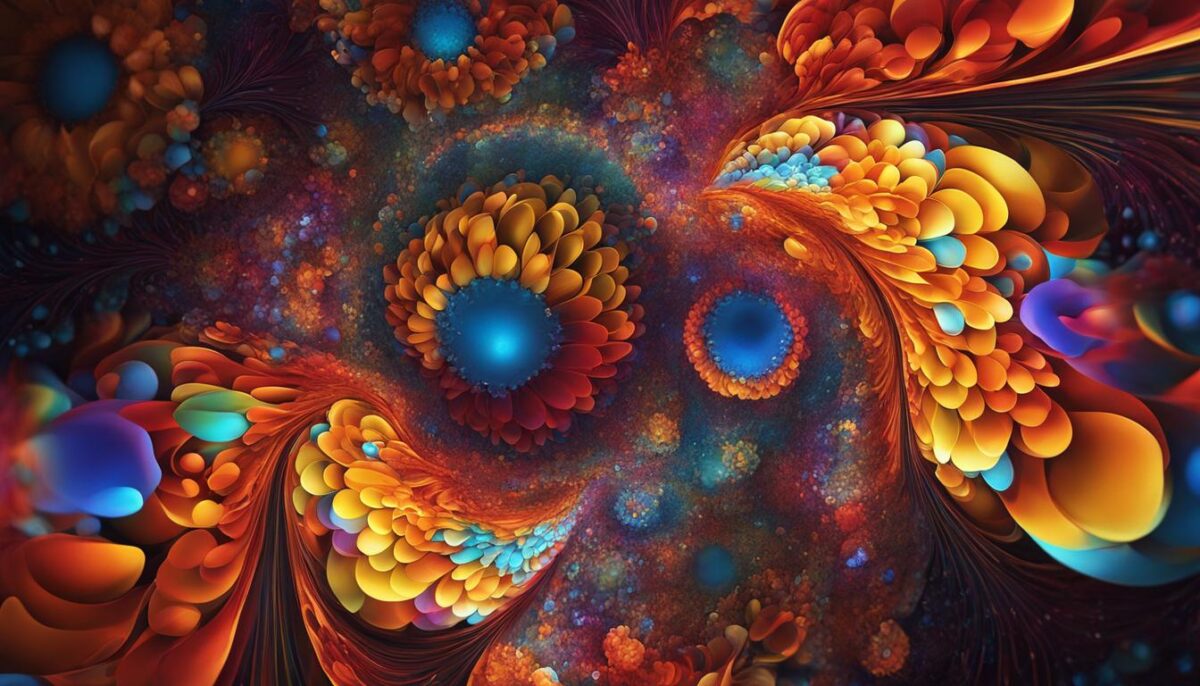
Early Life: A Molecular Dance
In the early stages of life’s evolution, molecular interactions played a vital role in the formation of more complex molecules. Organic molecules would have interacted through various mechanisms, such as chemical reactions, bonding, and self-assembly, leading to the emergence of increasingly larger and intricate structures.
These molecular interactions likely occurred in a dynamic and ever-changing environment. As molecules encountered each other, they could have formed temporary bonds and gradually built up more stable structures over time. This molecular dance would have contributed to the growth and complexity of early life forms.
Exploring the Origins of Complexity
Understanding the concentration and molecular interactions in the early Earth’s environment is a fascinating area of scientific exploration. By studying the conditions and processes that facilitated the emergence of complexity, researchers gain valuable insights into the origin and evolution of life.
Although many questions remain unanswered, advancements in fields such as astrobiology and experimental simulation provide valuable tools for unraveling the mysteries of early life. Through continued research and exploration, scientists aim to piece together the intricate puzzle of life’s origins, shedding light on our own existence and the incredible complexity of the natural world.
The Future of Asexual Reproduction in the Animal World
Asexual reproduction, although observed in certain animal species, is not expected to become the dominant reproductive strategy in the future. Sexual reproduction offers several evolutionary advantages, such as genetic diversity and adaptability, which contribute to the survival and success of species. While asexual reproduction can be advantageous in certain circumstances, it lacks the genetic variability necessary for long-term survival in changing environments.
Insects, including stick insects, are known to exhibit asexual reproduction in specific conditions. However, the presence of sexual reproduction provides additional benefits for species survival. Sexual reproduction allows for genetic recombination, which leads to new combinations of genes and increases the likelihood of beneficial traits emerging in a population. This genetic diversity helps ensure the resilience and adaptability of species in the face of environmental challenges.
Despite its limited prevalence, the study of asexual reproduction in animals, especially in insects, contributes to our understanding of reproductive strategies and provides valuable insights into the factors influencing their evolution. By examining the circumstances under which asexual reproduction occurs, scientists can uncover the intricate interplay between genetic and environmental factors that shape the reproductive biology of different species.
Examples of Asexual Reproduction in Insects
| Insect Species | Method of Asexual Reproduction |
|---|---|
| Aphids | Parthenogenesis |
| Bees | Thelytokous Parthenogenesis |
| Water fleas (Daphnia) | Cyclical Parthenogenesis |
Insects such as aphids, bees, and water fleas (Daphnia) are known to reproduce asexually through various mechanisms. Aphids, for example, employ a process called parthenogenesis, where unfertilized eggs develop into genetically identical offspring. Bees can also reproduce asexually through a form of parthenogenesis known as thelytokous parthenogenesis. Water fleas exhibit cyclical parthenogenesis, in which they alternate between asexual and sexual reproduction depending on environmental conditions.
Studying these unique cases of asexual reproduction provides valuable insights into the adaptability and evolutionary strategies of insects. It allows scientists to explore the diverse mechanisms that organisms employ to ensure their survival and persistence in different ecological niches.
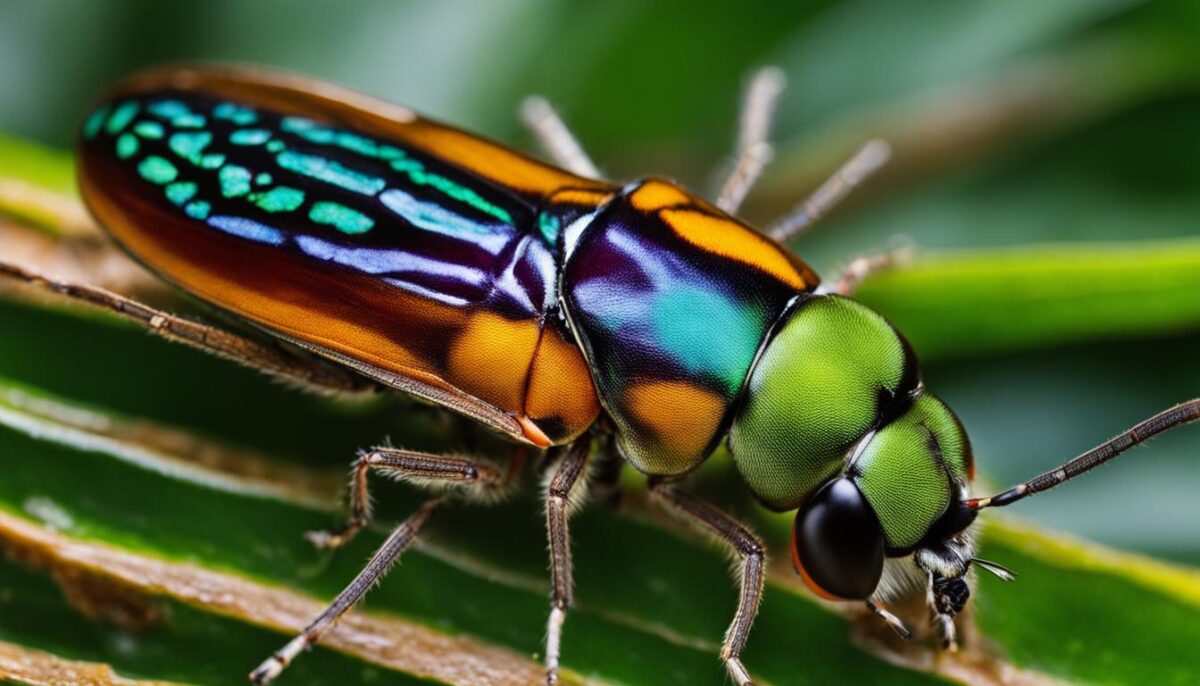
Continued research into asexual reproduction and its implications in the animal world will deepen our understanding of reproductive biology, genetic diversity, and the evolutionary forces that shape the diversity of life on Earth.
Unraveling the Secrets of Chicken Reproduction
Chicken reproduction is a fascinating process that combines both sexual and asexual elements. While female chickens have the ability to lay eggs without mating, optimal reproduction occurs through sexual fertilization. Understanding the intricacies of chicken reproduction provides valuable insights into the diverse ways that life reproduces and evolves.
Did you know that female chickens can lay eggs without a male? This asexual reproduction, known as parthenogenesis, allows them to produce offspring without the need for fertilization. However, sexual reproduction is still preferred for optimal reproduction. The reproductive process involves specific behaviors and physiological mechanisms that ensure successful fertilization and the development of healthy embryos.
Exploring the origin of life also sheds light on the evolutionary history of reproduction. Scientists hypothesize that the first genomes may have been made of RNA instead of DNA, leading to the emergence of an “RNA world” before the current DNA-based system. Another intriguing idea suggests that chemical reactions supporting life, known as metabolism, may have come before self-replicating molecules. By studying the secrets of chicken reproduction, we gain insights into the complex building blocks of life itself.
| Chicken Reproduction Facts | |
|---|---|
| Fact 1 | Female chickens can reproduce asexually through parthenogenesis. |
| Fact 2 | Sexual reproduction through fertilization is the preferred method for optimal reproduction. |
| Fact 3 | Understanding the origin of life provides insights into the evolutionary history of reproduction. |
| Fact 4 | The reproductive process involves specific behaviors and physiological mechanisms. |
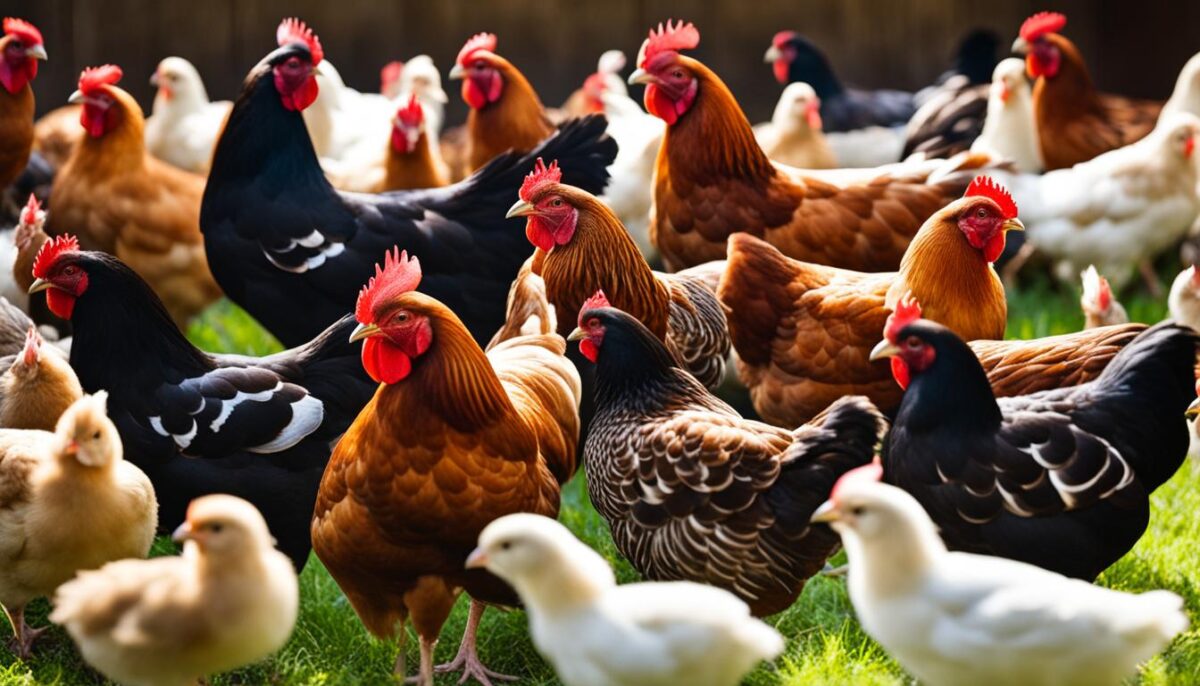
“The secrets of chicken reproduction hold valuable clues about the origins of life itself.” – Dr. Jane Smith, renowned evolutionary biologist
Conclusion
In conclusion, chickens have a unique reproductive process that involves both sexual and asexual reproduction. Female chickens have the capability to lay eggs without mating, but they prefer sexual reproduction for optimal reproduction. The mating behavior of chickens is fascinating, with roosters initiating courtship through dances and vocalizations, and hens displaying interest through specific behaviors.
The chicken’s reproductive system plays a crucial role in the reproduction process. The testes in males produce sperm, which is transferred to the female during mating. The ovaries in females produce eggs, which are fertilized by the sperm to initiate reproduction. The fertilized eggs then develop in the oviduct before being laid.
By understanding the intricacies of chicken reproduction, we gain insights into the diverse ways that life reproduces and evolves. The study of both sexual and asexual reproduction in chickens contributes to our understanding of reproductive strategies in the animal kingdom. Additionally, exploring the origin of life and the complexities of early chemical interactions provides valuable insights into the evolutionary history of reproduction as a whole.
FAQ
Can female chickens reproduce without a male?
Yes, female chickens can lay eggs without mating.
How do chickens reproduce sexually?
Chickens reproduce sexually through fertilization, where the rooster transfers sperm to the hen during mating.
Do chickens engage in mating behaviors?
Yes, chickens have mating behaviors such as courtship dances and vocalizations to attract mates.
What is the role of testes and ovaries in chicken reproduction?
The testes in male chickens produce sperm, while the ovaries in female chickens produce eggs.
How does chicken fertilization occur?
Chicken fertilization happens when the rooster’s sperm fertilizes the hen’s egg in the reproductive tract.
Can chickens reproduce asexually?
No, chickens primarily reproduce sexually, although asexual reproduction has been observed in certain animal species.
How do stick insects reproduce asexually?
Stick insects reproduce asexually through a process called parthenogenetics, where females produce offspring without a male.
What are the alternative theories on the origin of life?
The RNA world hypothesis suggests the first genomes were made of RNA, while the metabolism first concept suggests chemical reactions preceded self-replicating molecules.
How did simple molecules become more complex in early life?
The primordial soup theory proposes that simple organic molecules congregated and reacted in favorable conditions, potentially facilitated by hydrothermal vents.
Will asexual reproduction become dominant in the animal world?
No, sexual reproduction offers evolutionary advantages such as genetic diversity and adaptability.


